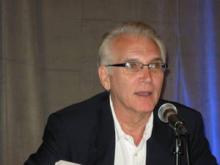WAIKOLOA, Hawaii — Dermatology organizations are gearing up for what they're calling 'Ban the Tan 2010,' a long-sought showdown with the tanning industry before the Food and Drug Administration.
On March 25, the FDA will hold an open hearing on the question of whether tanning bulbs should be regulated more stringently. The lights are now categorized as a Class I medical device, "like tongue depressors," Dr. Vincent DeLeo said at the annual Hawaii Dermatology Seminar.
Class I devices receive the lowest possible level of FDA scrutiny. That's absurd given that tanning lights cause skin cancer and photoaging, argued Dr. DeLeo, chairman of the department of dermatology at St. Luke's-Roosevelt Hospital Center and Beth Israel Medical Center in New York.
Among those slated to square off against the tanning industry at the hearing are representatives of the American Academy of Dermatology, Skin Cancer Foundation, American Cancer Society, and National Council on Skin Cancer Prevention .
The hearing will focus on the narrow issue of whether there should be tighter regulation of tanning bulbs because the FDA lacks the broad power to regulate the actual tanning salons. However, a bill was recently introduced in the U.S. House of Representatives that would give the agency that authority.
The anti-indoor tanning forces recently got another piece of good news. The Federal Trade Commission has ordered the International Tanning Association to cease its false advertising about the health benefits and safety of tanning salons or face fines. (See previous blog entry, "Indoor Tanning Business Burned by the FTC")
"Although tanning salons in this country will never be banned, the cost of doing business for them will increase and hopefully their false marketing efforts will decrease and consumers will understand a little better that tanning salons are not a safe way to get any kind of health benefits," according to Dr. DeLeo.
Last year 28 million Americans visited some 60,000 tanning salons. The latest generation of tanning lights used in the salons exposes customers to more UVA than the sun, he said.
Dr. DeLeo is eager to roast the tanning salon industry over a slow flame of scientific evidence. (Photo credit: Bruce Jancin)



